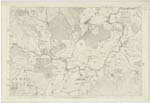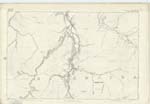OS1/1/47/104
| List of names as written | Various modes of spelling | Authorities for spelling | Situation | Description remarks |
|---|---|---|---|---|
| KILDRUMMY CASTLE (In Ruins) | Kildrummy Castle (Ruins of) Kildrummy Castle (Ruins of) Kildrummy Castle (Ruins of) Kildrummy Castle (Ruins of) |
Statistical Account 1843 Collections of the Shires Aberdeen & Banff 1843 L. Duncan's Plan & Pamphlet. Revd. [Reverend] John Christie. The Manse. |
061 | [Continued from page 103] No. 4 Continued Kildrummy Castle (Ruins of ) This window, with the large and elegant tower which flanks it on the north, are almost all that remains, on which the eye can rest with pleasure, ghastly-looking masses of stone and rubbish being nearly all that now exists of this once splendid fabric. A large building adjoining the Donjon, with a lofty gable, notched in usual style of the sixteenth century, is remarkable, as being the part of most recent erection. (Lord Alexander Elphinstone, who fell at Flodden, was its founder), and for a huge opening like a Gothic arch, which seems to leave it with but very slender support. This gable, and some of the north face, the large towers on the east, the projecting end of the chapel, and some other parts, are of firm and beautifully-chisselled ashlar work. Unfortunately for the picturesque effect of Kildrummy Castle, there is not a single footbreadth of the wall entire. Corbal tables and crenillated parapets, which generally form the chief ornament of structures of its class, are thus altogether awanting, nor can the form or materials of the roof be now ascertained. Such aged persons as have seen parts of it nearly entire, are all too ignorant to be able to give any intelligible description. It may, however, be presumed, that part of it was castellated, and part weather stated. The highest remaining tower may have an altitude of some 50 feet. The authentic history of this ancient stronghold, in so far as it can be of interest, is soon told. In the year 1306 after Robert Bruce was defeated at Methven, his Queen, and it is said his brother Niel or Nigel, and other persons of distinction took refuge for the winter at Kildrummy, whilst the hero himself sought safety amongst the wildest recesses of the Highlands. The English laid siege to Kildrummy without effect, until a blacksmith belonging to the garrison undertook, for a large bribe, to betray it into their hands. He executed his diabolical purpose by introducing a red-hot coulter or bar of iron, by a window, into an apartment filled with forage and such like stores, which soon set the whole Castle in a blaze - See No. 5 [Continued on page 105] |
Continued entries/extra info
[Page] 104Parish of Kildrummy
Transcribers who have contributed to this page.
CorrieBuidhe- Moderator, LBruce
Location information for this page.





